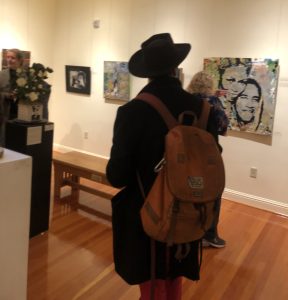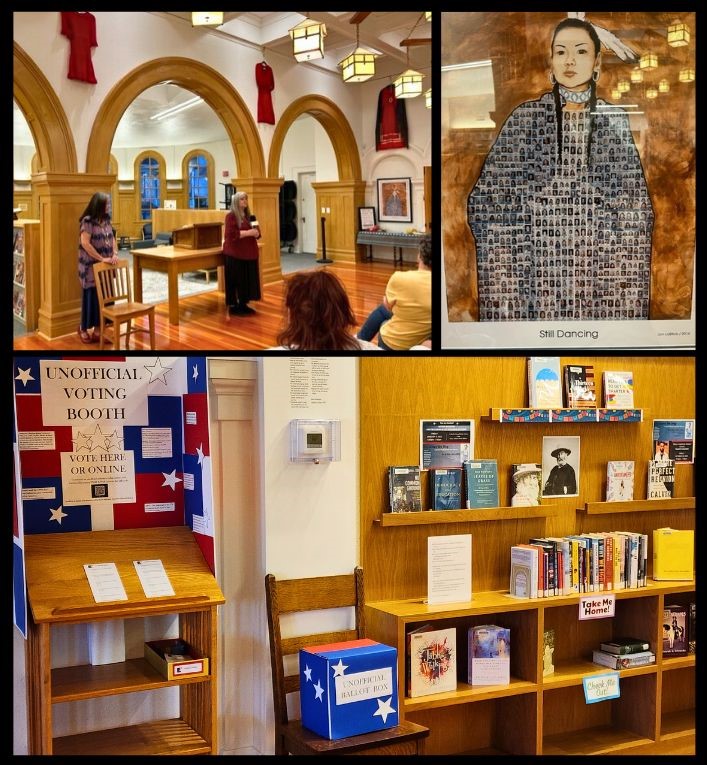Public libraries have long been on the front lines of society, evolving beyond simply linking people to information—as hyperlinked community hubs, diverse individuals connect across physical and virtual spaces. These hyperlinked communities engage through both physical gatherings and digital platforms, and libraries exemplify this model by creating spaces that are welcoming to all and seek to eliminate barriers to access. In a sampling of 31 library mission/vision/value statements, Drew (2021) notes that while unique based on location, messaging related to inclusion and the enrichment of the individual and the community is seen throughout.

Public libraries “belong at the very heart of people’s lives, contributing to their enjoyment and inspiration, cultural values, learning, economic prosperity and social equity” (Yarrow, A., Clubb, B. & Draper, J.L. 2008). The article by Jensen (2017) expands, stating, “libraries are not, nor have they ever been, neutral spaces”. This has been much on my mind, and Jensen’s article especially resonated with me. Jensen continues, “by inviting all in a community to be in a shared space, libraries embrace the idea of encouraging education, encouraging acceptance and tolerance ”. These are concepts that I’ve connected to art in libraries.
Our library responded to a community movement transforming a space into an art gallery, which has hosted exhibitions with a call towards social justice and inclusion. Additionally, many libraries across the globe are digitizing historical works of art as well as contemporary artworks and related data so they can be shared without limitations.
“Art can serve personal, political, and aesthetic functions, including personal expression, and social, historical, or political messaging” (ALA, 2006). As such, visual artists frequently expose vulnerabilities and are involved in social justice movements.

Our small gallery has hosted art shows that run the gamut from large canvas paintings to calligraphy, sculpture, mixed media, quilt making, and more. The artists themselves are equally diverse, from studio artists to student artists to photography clubs to a quilter’s guild to an art therapy group of neurologically disabled adults. Each fall, the library hosts a juried art show and a series of events. The architect of these had been an instructor in human services and social sciences, curating around raising social awareness. For example, the 2022 exhibition was titled “Renaissance: Remember, Rise, Revitalize – celebrating the Harlem Renaissance and rising above restrictions”. 2023 was titled “Ourselves We Sing: a Call and Response to Walt Whitman” and emphasized voting and the long history of voting rights.
Presenters at these events included poet laureates and musicians of Black, Hispanic, Asian, LGBTQ+, and Native American heritage, with advocacy agencies and additional installations such as Día de los Muertos altars and the REDress Project highlighting missing and murdered Indigenous women. Due to numerous requests to document these installations and events, we partnered with a local film company to create professional recordings for our library’s YouTube channel. These digital extensions of our physical exhibitions create additional hyperlinks between community members, allowing conversations beyond the library’s walls and enabling wider participation in these important cultural dialogues.

Art in libraries is one example of how modern libraries function as hyperlinked community hubs—spaces where diverse voices intersect, connect, and amplify one another with the potential for connecting experience at the library to civic action in their community (such as high school students organizing a voting drive). As we navigate the digital age, libraries remain uniquely positioned to strengthen these hyperlinked communities by bridging physical and virtual spaces, ensuring that all community members—regardless of background or ability—can find meaningful connections through shared cultural experiences. In this way, libraries fulfill their enduring mission of connecting people to information and connecting people to each other in increasingly meaningful and inclusive ways.
References
American Library Association (ALA). (2006, July 26). Visual and performing arts in libraries: An interpretation of the library bill of rights. Advocacy, Legislation & Issues. https://www.ala.org/advocacy/intfreedom/librarybill/interpretations/arts
Drew, C. (PhD). (2021, February 12). 31 examples of library vision and mission statements. Helpful Professor. https://helpfulprofessor.com/library-mission-statements/
Jensen, K. (2017, February 10). Libraries resist: A round-up of tolerance, social justice, & resistance in us libraries. Book Riot. https://bookriot.com/libraries-resist-round-tolerance-social-justice-resistance-us-libraries/
Yarrow, A., Clubb, B. & Draper, J.L. (2008). Public libraries, archives and museums: Trends in collaboration and cooperation: 108. International Federation of Library Associations and Institutions.://archive.ifla.org/VII/s8/pub/Profrep108.pdf
@Angela I’m so happy to read about the connection between libraries and art. I think this is a perfect partnership. I also think it’s incredibly fascinating to see a dissertation done on vision statements and mission statements. I think I need to investigate this. It sounds so interesting.